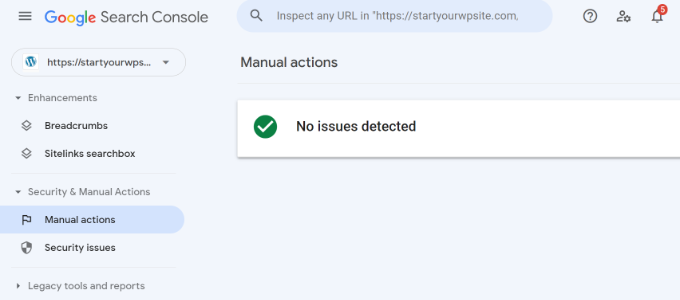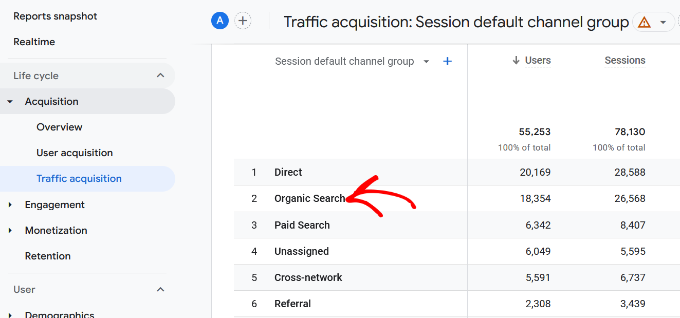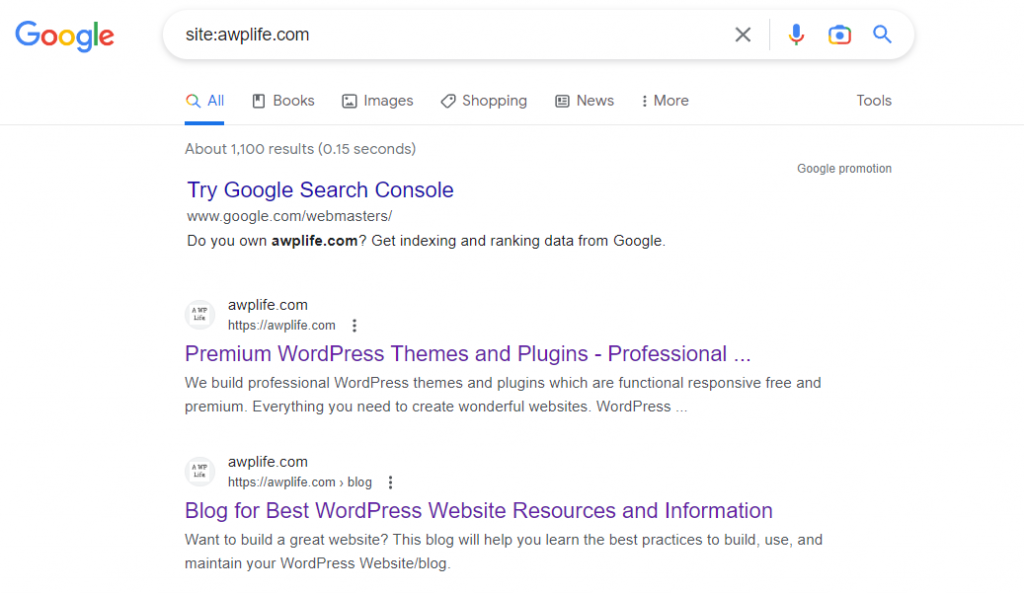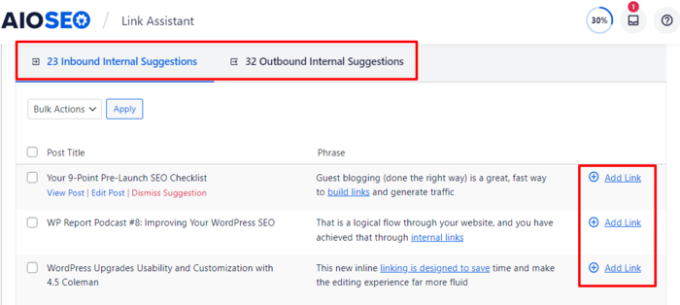
Google’s search penalty is every website owner’s worst nightmare. Your site pages may be removed from search results or lowered in search rankings, resulting in a dramatic loss in organic traffic.
What exactly is the Google Search Penalty?
A search penalty is a punishment imposed by Google on websites that breach its policies.
Google’s mission is to provide its users with the best search results possible. Sites that attempt to manipulate or scam the system in order to attain higher search ranks by unethical means, on the other hand, are frequently penalized.
As a result, penalized WordPress sites may notice a decline in search rankings or, in severe situations, be removed from search results.
Google has two sorts of penalties:
- Manual penalties Manual punishments are applied by Google’s internal team, and every offense is reported to you. It could be for things like spam material, veiled images, hidden language, unnatural internal and external links, and other Google Search Essentials rules infractions.
- Algorithm penalties: Algorithm penalties occur when Google updates the search algorithm in order to deliver better search results. This form of penalty is difficult to detect because there is no warning from Google.
How to Find a Google Search Penalty
It is possible to verify Google search penalties for WordPress sites in several ways.
In Google Search Console, look for Manual Actions.
To begin, log in to your Google Search Console account and search for manual penalties issued by the search eLog into your Google Search Console account to see whether you’ve been penalized by the search engine manually.
Simply navigate to Security & Manual Actions » Manual actions from the left-hand Search Console menu. Any manual penalties imposed by Google will be displayed here.

If you get the ‘No problems identified’ notice, you’re good to go.
Accordingly, here are a few manual steps Google can take against your site:
- Third-party spam is abusing the site.
- Spam created by users
- Spammy-free hosting
- The problem with structured data
- Links to and from your site that are not natural
- Content that is thin and has little or no extra value
- Pure nonsense
- Cloaking or deceptive redirects
- Images that are obscured
- Mismatch in AMP content
- Mobile redirects that are deceptive
- Stuffing keywords or using hidden text
- Policy breaches in the news and discovered
Examine Google Analytics for a decrease in organic traffic.
Following that, you may examine your site’s organic traffic in Google Analytics. If there is a significant decline, it might be due to a search penalty.
This approach is useful for checking for algorithm penalties, especially after a major Google update.
Go to Reports » Acquisition » Traffic Acquisition in Google Analytics 4 and look at the Organic Search numbers.

You may change the date range at the top and compare it to a previous period to search for a drop in traffic.
To go further, you may utilize a keyword tracker tool to examine search phrase ranks for your website. If you observe a decline in different keyword ranks, it might signify you’ve been penalized with a search penalty.
Google Your Website and Content
Finally, if your web pages aren’t appearing in Google search results, you may check to see if they’ve been blacklisted or delisted.
Simply type site: example.com’ into Google and see whether your site displays. Simply replace example.com with the URL of your own site.

If your website does not appear in the search results, it may have been delisted owing to a search penalty.
You may also use Google to look up some of the material from your most significant pages. This will also aid in the detection of delistings or declines in search ranks for essential pages.
Restoring A WordPress Site After A Google Search Penalty
Having said that, let’s have a look at various methods for recovering a WordPress website from a Google search penalty.
1. Conduct an SEO Audit to Identify Critical Issues
An SEO audit determines whether your WordPress website is properly optimized for search engines.
An SEO audit can help you identify important SEO flaws and faults on your site. This way, you can rapidly correct problems and return your site to the top of search results. For this one should know some SEO ranking factors for their website.
Using the All in One SEO (AIOSEO) plugin is a quick and easy approach to running an SEO audit in WordPress. It is the greatest SEO WordPress plugin for optimizing your site for search engines without the need for technical skills.
You may execute an audit using AIOSEO’s SEO Analysis tool from within the WordPress admin. It examines your website using many metrics and flags any important concerns. Furthermore, you will receive advice for addressing mistakes, which will aid in the recovery of your site from a search penalty.

2. Improve Your Backlink Profile
Unnatural connections to and from your WordPress website are one of the most prevalent reasons Google gives a search penalty.
Google primarily penalizes sites that buy spammy links or participate in various link schemes to increase their search engine results. This might be done manually or by an algorithm change.
Identifying and eliminating bogus backlinks is a straightforward technique to restore your site from such penalties. However, removing the backlink might be a time-consuming operation, especially if you have to visit every page on your site.

Following that, you may see all of the domains that connect to your website.
Domains that appear unnatural or spammy are highlighted on this page. After that, pick the domain, then click the Bulk Actions dropdown box and select the ‘Delete’ option.

After that, you may delete links from a specific domain by clicking the ‘Apply’ button.
You can also click on any of the websites to see the pages on your site they are connecting to. Then, to delete a hyperlink from a certain page or post, click the trash can symbol.

If you are unable to delete an unnatural, spammy, or fake link, you can use Google’s disavow links tool to remove it.
Please keep in mind that this approach is intended for people with technical understanding and is not appropriate for beginners. You should check Google’s guidelines on how to disavow links to your site for further information.
3. Audit the content
Auditing your content is another technique to recover from Google search penalties.
Here are a few things to look at and correct on your website.
Resolve thin and duplicate content
Google will penalize sites that have thin content that provides little or no value to users. This comprises low-quality content created by software or generated automatically. Or affiliate pages with a few lines and a product promotion link.
Similarly, if you have duplicate material or pieces taken from other websites, Google may penalize you.
An easy solution is to find pages with relevant or thin text and then rewrite them. You may use Google Analytics to identify pages with little or no traffic.
Simply navigate to Google Analytics’ Reports » Engagement » Landing page.

After unearthing information with thin content, you can add additional value by delving further into the issue, making the content more engaging using graphics and videos, and ensuring you have original content.
Pages with duplicate or auto-generated material, on the other hand, can be identified and removed from your website. Simply copy and paste portions of the text into Google. The search will return all pages and articles on your site that have the same content.
If your content has been scraped by other websites, you can use tools like Copyscape to identify plagiarised information. You may also be interested in our advice on how to simply discover and remove stolen content in WordPress.
Get rid of keyword stuffing and hidden text.
If your site’s material is illogical and crammed with search phrases in order to rank better, you may face a search penalty for keyword stuffing. Similarly, Google may penalize websites that have hidden content and keywords in their CSS design.
You may simply resolve this issue by eliminating or altering keyword-stuffed material. Search keywords should not be repeated too often. You may also utilize keyword research tools such as Semrush to uncover new keywords to include in your article.
Semrush also provides an SEO writing assistance tool that assists you in discovering LSI and related keywords, readability score, language tone, and other factors that will help you generate optimized content.
Get Rid of User-Generated Spam
It is recommended to conduct a thorough scan of your website to detect any spam comments. Examples of such comments include those with advertising links, spammy usernames, auto-generated or irrelevant remarks, and unrelated links.
Simply navigate to Comments from your WordPress dashboard and label the comment as Spam. You may also delete the remark by selecting Trash.

Examine Your Site’s Internal Linking
Google’s search crawlers employ links on your website to discover new information and establish a contextual relationship between new and old content.
Internal link auditing aids in the recovery of your WordPress site from an algorithm penalty. For example, if a page has no or few internal connections, you can create internal links to other related sites to increase their ranks.
You may increase internal linking on your website by using the AIOSEO link assistance. It will display current linkages as well as new connecting opportunities. Aside from that, you may highlight orphaned pages that lack internal links.

Examine Page Load Time
When doing an audit, you should also assess the load time of your website. While a slow-loading website will not result in a Google search penalty, it will have an effect on your search engine rankings.
This is because Google now considers page load speed when ranking websites. Sites that load quickly will have an edge over those that load slowly.
You may audit page load performance with IsItWP’s free website speed test tool. The program will offer an overall score as well as recommendations for increasing page performance.

4. Check to Make Sure Your Website Isn’t Hacked
If your WordPress website is hacked and injected with malicious code that might deceive Google, you may face a search penalty.
Typically, hackers would upload scripts or bits of code to your website that would cause stealthy redirection. Because this violates the standards, your websites may be deindexed from search results.
In Google Search Console, navigate to the Security & Manual Actions > Security Concerns area to look for security issues.

Aside from that, you may do a WordPress security audit to identify any flaws that may result in a search penalty. You may, for example, examine your website for malware and other security flaws.
5. Look at recent Google algorithm updates.
Additionally, you may be penalized if your traffic or rankings decline after a Google upgrade.
In contrast to manual punishment, it is extremely difficult to determine the impact of an algorithm adjustment. Google will not inform you why your site’s ranks or traffic have dropped.
You may, however, look into the most recent Google algorithm update to discover what has changed. Following that, you may do an assessment of your site’s SEO, content, and security to identify and resolve any concerns.
Following WordPress blogs is the greatest method to remain up to speed on the newest algorithm updates and tweaks. Many famous marketing and SEO websites give the newest Google algorithm updates news, case studies, and other information.
Submit a Reconsideration Request to Have Penalties Lifted.
After you’ve resolved the issue that caused Google search penalties, you should file a reconsideration request to have the penalties lifted.
If you receive a manual punishment, this process is rather easy. You may seek a review for the particle problem by logging into your Google Search Console account and going to the Security and Manual actions area.
We recommend that you include the following information in your reconsideration request:
- Explain in detail how you comprehend Google’s standards and recommended practices. You can share links to answers in Google forums, YouTube videos, and other Google literature on the manual activity.
- Demonstrate that you’ve done everything possible to resolve the problem, such as deleting artificial links. You can submit your case with screenshots, a list of deleted links, and other proof.
- Assure users that your site is designed for them, not search engines, and that you will not make the same mistake again. You may also make certain that any other actions on your website follow Google’s rules.
Google will examine your consideration request once you submit it. The reaction time is generally proportional to the severity of the search penalty. It might take days, weeks, or even months to hear back from Google and determine whether or not your search penalty has been erased.
